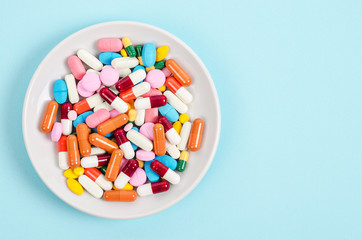Facts
Over 100,000 people die from overdose each year
70% of those deaths are now related to fentanyl. In 2021, 98,268 people died from preventable drug overdoses - an increase of 781% since 1999. These deaths represent 92% of the total 106,699 drug overdose deaths in the United States, which also include suicide, homicide, and undetermined intents.

A Chronic Disease
Substance misuse can lead to addiction, a chronic brain disorder that must be managed over one's lifetime. Addiction is a chronic disease because prolonged substance abuse alters the brain's reward system to trigger biological and behavioral responses related to the abused substance. Additionally, changes to the frontal cortex of the brain alter impulse control and judgment.
Fentanyl is Deadly
Fentanyl is responsible for over 70,000 overdose (or poisoning) deaths per year. According to the DEA, two milligrams of fentanyl can be lethal depending on a person's body size, tolerance and past usage. DEA analysis has found counterfeit pills ranging from .02 to 5.1 milligrams (more than twice the lethal dose) of fentanyl per tablet. It is possible for someone to take a pill without knowing it contains fentanyl. It is also possible to take a pill knowing it contains fentanyl, but with no way of knowing if it contains a lethal dose.


Counterfeit Pills Are Everywhere.
According to the DEA, 6 of 10 counterfeit pills they confiscated contain a lethal dose of fentanyl. There is significant risk that illegal drugs have been intentionally contaminated with fentanyl. Because of its potency and low cost, drug dealers have been mixing fentanyl with other drugs including heroin, methamphetamine, and cocaine, increasing the likelihood of a fatal interaction.
Relapse Rates Are High
Addiction cannot be cured with 30 days of rehab treatment. Relapse after rehab can be as high as 85%. According to Betty Ford/Hazelden, "research shows that alcohol and opioids have the highest rate of relapse....and similarly some studies suggest a relapse rate for opioids as high as 80-85% during the first year after treatment."


Adolescents Are at Risk
1 in 10 adolescents will develop the disease of addiction before they leave high school. CDC Statistics:
- 15% of high school students reported having ever used select illicit or injection drugs (i.e. cocaine, inhalants, heroin, methamphetamines, hallucinogens, or ecstasy)
- 14% of students reported misusing prescription opioids.
- Injection drug use places youth at direct risk for HIV, and drug use broadly places youth at risk of overdose.
- Youth opioid use is directly linked to sexual risk behaviors.
- Students who report ever using prescription drugs without a doctor's prescription are more likely than other students to have been the victim of physical or sexual dating violence.
- Drug use is associated with sexual risk behavior, experience of violence, and mental health and suicide risks.

